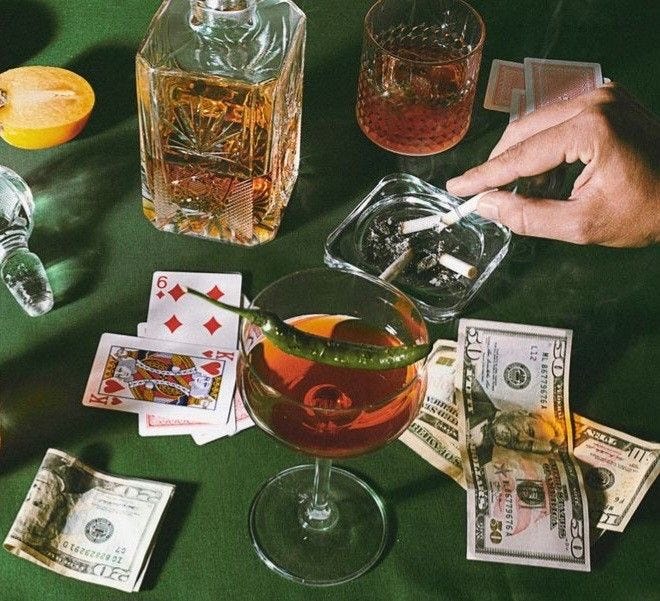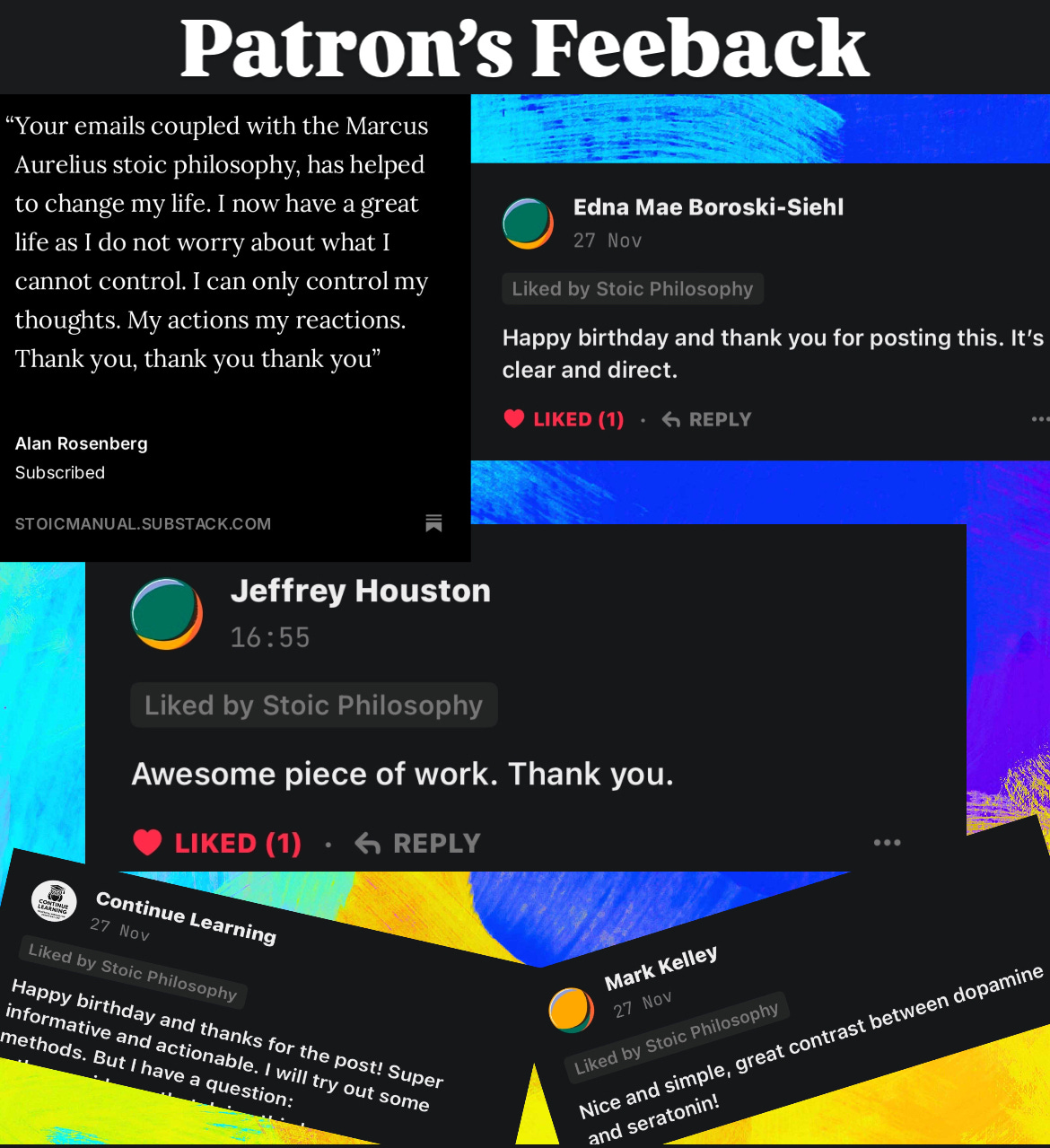#6. The Neuroscience of Addiction: Practical Tools to Understand & Conquer
Dr. Anna Lembke reveals that modern life is designed to exploit our vulnerabilities to pleasure and pain, keeping us trapped in cycles of dependence and dissatisfaction.
The ‘Neuroscience-based Tools’ section is a companion for The Stoic Manual to help you become wealthier, happier & more powerful by boosting your resilience, drive, mood, motivation, relationships, focus, and overall health—by Dr. Antonius Veritas.
Addiction has evolved.
It’s about drugs or alcohol—plus the never-ending scroll through social media, the binge-watching marathons, the relentless pull toward fleeting distractions.
These dopamine-driven habits don’t just waste time—they hijack your brain, quietly controlling your decisions and stealing your freedom.
Dopamine, the brain’s chemical for reward and motivation, is at the core of this epidemic.
Dr. Anna Lembke reveals that modern life is designed to exploit our vulnerabilities to pleasure and pain, keeping us trapped in cycles of dependence and dissatisfaction.
But here’s the hard truth: no one is coming to save you.
To break free, you need to understand the science behind addiction and take back control.
This guide will reveal the hidden mechanisms keeping you stuck and arm you with practical steps to regain your focus, freedom, and fulfillment.
Addiction doesn’t have to define you.
Take the first step—read on and learn how to break the chains.
Paid subscribers get a 30-day step-by-step plan to heal the brain, reset dopamine, a walk-through of what to expect, and an action plan to conquer addiction and sustain sobriety over the long term for the full transformation.
This information is worth the $45,000 someone would spend in rehab.
So all I ask is that you take it to heart and be patient with yourself.
Stoicism resources:
SECTION 1. Dopamine: The Brain’s Powerhouse of Motivation and Pleasure
Dopamine is more than the "feel-good" molecule—it’s the neurotransmitter that drives your desires, fuels your motivation, and shapes your learning.
It’s the brain’s way of saying, “Do that again; it’s worth it.”
Here’s how it works:
At rest, your brain releases dopamine at a baseline (tonic) level that maintains your general mood and motivation.
When something pleasurable happens—like eating a favorite meal or achieving a goal—dopamine surges, tipping what Dr. Anne Lembke calls the brain’s pleasure-pain seesaw toward reward. This creates the high that motivates you to seek the experience again.
However, the surge doesn’t last. The brain quickly restores balance (homeostasis) by tilting the seesaw toward pain, creating a slight “low” or sense of dissatisfaction after the high fades.
🪔 Insight:
Every time you seek pleasure (a treat, a thrill, or recognition), there’s a trade-off: a temporary boost followed by a compensatory dip.
The secret to happiness lies not in avoiding this cycle but in moderating it.
Overindulgence leads to imbalance.
1.2 Chronic Stimulation: How Addiction Hijacks Dopamine
Addictive behaviors and substances—like drugs, binge-eating, gaming, or social media—exploit the dopamine system by triggering unnaturally high surges.
Unlike natural pleasures, these spikes are intense and sustained, flooding the reward system.
Here’s what happens:
Overloading the System:
Addictive behaviors flood your brain with dopamine, pushing the seesaw heavily toward pleasure.The Brain’s Counterattack:
To protect itself, your brain fights back by:Decreasing receptor sensitivity (it becomes harder to feel joy).
Lowering baseline dopamine levels, leaving you in a constant state of dissatisfaction or dopamine deficit.
The Trap:
With your brain now wired for less baseline pleasure, everyday joys—like a walk in the park or a meal with friends—lose their appeal. You feel compelled to keep chasing the artificial high just to feel normal.
🪔 Insight:
If life feels dull or unsatisfying, it’s not necessarily your fault.
Your dopamine system may be recalibrated to expect unnatural highs.
Recovery begins by resetting this system, allowing natural pleasures to regain their vibrancy.
1.3 The Science of Craving: Why Triggers Matter
Craving is the invisible pull toward an addiction—and it’s not just psychological.
It’s deeply rooted in your brain’s dopamine-driven reward system.
The Craving Cycle Explained:
Cue or Trigger:
Something in your environment—a smell, a place, or a thought—reminds your brain of the reward associated with the addictive behavior.
Example: Seeing your phone may trigger a craving to scroll social media.Mini Dopamine Spike:
Anticipation alone releases dopamine, creating a small high.
Problem: This spike is followed by a deeper drop below your already low baseline. This dopamine deficit creates an urgent need to restore balance by engaging in the behavior.Compulsion:
The drop triggers the craving—a biological urge to return to the addictive behavior to escape the discomfort of the deficit.
SECTION 2: The Devouring Nature of Addiction
Addiction isn’t limited to substance abuse—it’s an encompassing mechanism that impacts behaviors, thoughts, and decisions.
It operates on the same neurological principles regardless of the stimulus—from scrolling endlessly on social media to compulsive gambling or overwork.
Recognizing addiction as a spectrum rather than a fixed problem allows us to understand its reach and take targeted action.
2.1 Beyond Substances: Addiction as a Behavioral Spectrum
Addiction doesn’t always come in a bottle or a syringe.
This is What Behavioral Addictions Have in Common:
Supernormal Stimuli:
These behaviors provide exaggerated levels of reward compared to natural pleasures.
For example: Winning a video game floods your brain with dopamine far more than finishing a project at work. Swiping on social media is far more stimulating than reading a book.
Immediate Gratification:
Addictive behaviors prioritize short-term pleasure over long-term goals. The brain is rewired to seek the “quick fix” at the cost of deeper, sustained rewards.
Why It’s Dangerous:
Behavioral addictions may seem harmless because they lack the stigma of substance abuse. However, they:
Create similar neurochemical imbalances, including reduced dopamine sensitivity.
Drain time and energy, leaving little room for personal growth or meaningful relationships.
Often go unnoticed or unaddressed until they significantly disrupt life.
Practical Takeaway:
Ask yourself:
“Do I repeatedly engage in this behavior despite negative consequences?”
“Does this behavior interfere with my ability to pursue my goals or connect with others?”
If the answer is yes, treat it as a potential addiction.
2.2 Escapism: The Hidden Motivator Behind Addiction
Addiction isn’t just about chasing pleasure—it’s often about avoiding pain.
Many people turn to addictive behaviors as a way to escape unresolved emotions or uncomfortable life situations.
Why Escapism Fuels Addiction:
Stress and Boredom:
The brain craves stimulation when life feels overwhelming or monotonous. Addictive behaviors offer a quick “out.”
Example: Stressful workdays may lead to late-night Netflix binges as a way to numb out.
Loneliness and Isolation:
Addiction thrives when social connections are lacking. People may turn to online communities, substances, or behaviors to fill emotional voids.
Unresolved Trauma:
Early-life adversity (e.g., neglect, abuse) disrupts the brain’s ability to regulate emotions. Addictive behaviors act as a coping mechanism to suppress painful memories or feelings.
Action Plan to Combat Escapism:
Name the Pain:
Write down the specific emotions or situations you’re trying to avoid.
Example: “I feel lonely after work, so I turn to social media for connection.”
Replace Avoidance with Engagement:
Replace passive escapism (scrolling, drinking) with active engagement.
Example: Instead of zoning out on TV, call a friend or join an in-person activity like a class or club.
Address Underlying Issues:
If trauma or deep-seated emotional pain is fueling addiction, seek professional therapy. Techniques like CBT (Cognitive Behavioral Therapy) or EMDR (Eye Movement Desensitization and Reprocessing) can help process these emotions constructively.
2.3 Risk Factors and Vulnerabilities
Some people are more susceptible to addiction due to biological, psychological, and environmental factors.
Genetics:
Studies show a genetic predisposition for impulsivity or heightened dopamine sensitivity can increase addiction risk.
Actionable Insight: If addiction runs in your family, be mindful of high-risk behaviors and establish boundaries early (e.g., limit exposure to alcohol or set tech-free hours).
Trauma and Mental Health:
Adverse childhood experiences (ACEs) and untreated mental health disorders (e.g., anxiety, depression) create fertile ground for addiction.
Actionable Insight:
Take a free ACEs test to understand your trauma risk score.
Address mental health proactively with regular check-ins, mindfulness, or professional help.
Environment:
Easy access to addictive substances or stimuli increases the likelihood of dependency.
Example: A household stocked with sugary snacks makes emotional eating more tempting, while constant phone notifications encourage compulsive checking.
Practical Steps to Minimize Risk:
Control Your Environment:
Remove addictive triggers (delete apps, avoid environments like bars or casinos).
Create friction: For example, require a password or app lock to access social media.
Strengthen Protective Factors:
Build a strong support network of friends and family.
Develop stress management tools like exercise, meditation, or creative outlets.
SECTION 3: The Journey to Recovery—Rewiring Your Brain
Recovery from addiction is both about quitting a behavior or substance and rebuilding your brain’s reward system to experience life’s natural joys and sustain long-term balance.
Here’s a clear, actionable, and achievable process.
3.1 The Dopamine Reset: A 30-Day Blueprint
Why Resetting Works: Addiction distorts your brain’s dopamine pathways, reducing your ability to feel joy from ordinary experiences.
A 30-day dopamine reset allows your brain to recover by abstaining from the addictive substance or behavior.
Stage 1: Days 1–10 — The Painful Detox
In the first 10 days, withdrawal symptoms hit hardest because your brain is craving the quick dopamine fix it’s used to.
These symptoms can include:
Irritability, mood swings, and anxiety.
Physical restlessness, fatigue, or insomnia.
Intense cravings for the addictive substance or behavior.
Action Plan for Days 1–10:
Do you like this entry so far? ⭐️
Support the publication to read the rest and access 100+ premium essays, neuroscience-based tools & meditations.
Here’s what other readers are saying…







